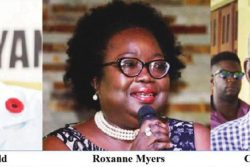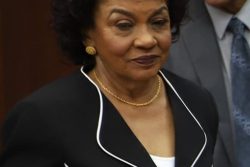MARIKANA, South Africa, (Reuters) – The police killing of 34 striking platinum miners in the bloodiest security operation since the end of white rule cut to the core of South Africa’s psyche yesterday, with searching questions asked of its post-apartheid soul.
Newspaper headlines screamed “Bloodbath”, “Killing Field” and “Mine Slaughter”, with graphic photographs of heavily armed white and black police officers walking casually past the bloodied corpses of black men lying crumpled in the dust.
The images, along with Reuters TV footage of officers opening up with automatic weapons on a small group of men in blankets and t-shirts at Lonmin’s Marikana platinum plant, rekindled uncomfortable memories of South Africa’s racist past.
Police chief Riah Phiyega confirmed 34 dead and 78 injured in Thursday’s shootings after officers moved against 3,000 striking drill operators armed with machetes and sticks at the mine, 100 km (60 miles) northwest of Johannesburg.
A sombre-looking President Jacob Zuma, who cut short a trip to Mozambique for a regional summit because of the violence, travelled to Marikana and announced he had ordered an official inquiry into what he called the “shocking” events.
“This is unacceptable in our country which is a country where everyone feels comfortable, a country with a democracy that everyone envies,” he said in a statement read at a news conference. He did not take questions.
Phiyega, a former banking executive appointed to lead the police force only in June, said officers acted in self-defence against charging, armed assailants at Marikana.
“The police members had to employ force to protect themselves,” she said, noting that two policemen had been hacked to death by a mob at the mine on Tuesday.
However, the South African Institute of Race Relations likened the incident to the 1960 Sharpeville township massacre near Johannesburg, when apartheid police opened fire on a crowd of black protesters, killing more than 50.
“Obviously the issues that have led to this are not the same as the past, but the response and the outcome is very similar,” research manager Lucy Holborn told Reuters.
In a front-page editorial, the Sowetan newspaper questioned what had changed since 1994, when Nelson Mandela overturned three centuries of white domination to become South Africa’s first black president.
“It has happened in this country before where the apartheid regime treated black people like objects,” the paper, named after South Africa’s biggest black township, said. “It is continuing in a different guise now.”
Zuma, who faces an internal leadership election in his ruling African National Congress (ANC) in December, called on South Africa to mourn together. “It is a moment to start healing and rebuilding,” he said at Marikana.
“We believe there is enough space in our democratic order for any dispute to be resolved through dialogue without any breaches of the law or violence,” an earlier statement from him said.
Despite promises of a better life for all South Africa’s 50 million people, the ANC has struggled to provide basic services to millions in poor black townships.
Efforts to redress the economic inequalities of apartheid have had mixed results, and the mining sector comes in for particular criticism from radical ANC factions as a bastion of “white monopoly capital”.
In Washington, the White House said it was saddened by the loss of life. “We encourage all parties to work together to resolve the situation peacefully,” spokesman Josh Earnest said.
POLICE PRESENCE
Hundreds of police patrolled the dusty plains around the Marikana mine, which was forced to shut down this week because of a rumbling union turf war that has hit the platinum sector this year.
Crime scene investigators combed the site of the shooting, which was cordoned off with yellow tape, collecting spent cartridges and the slain miners’ bloodstained traditional weapons – machetes and spears.




